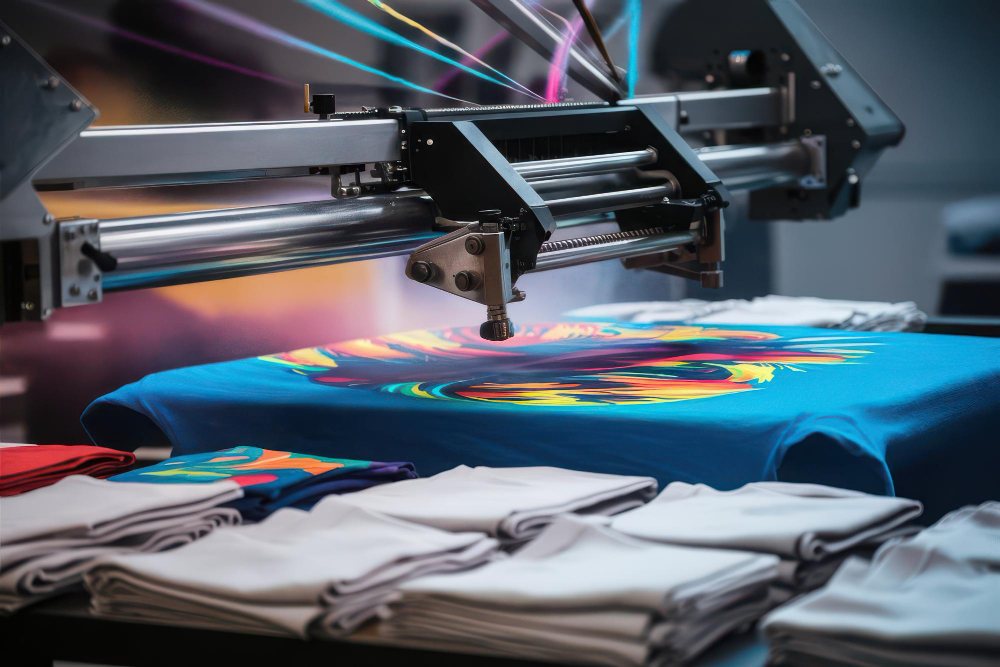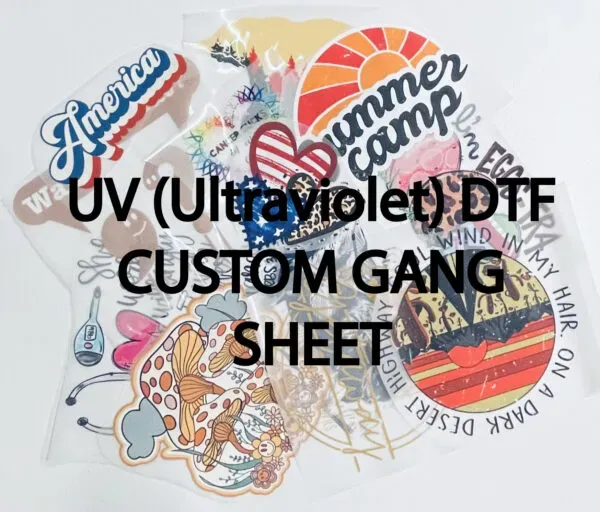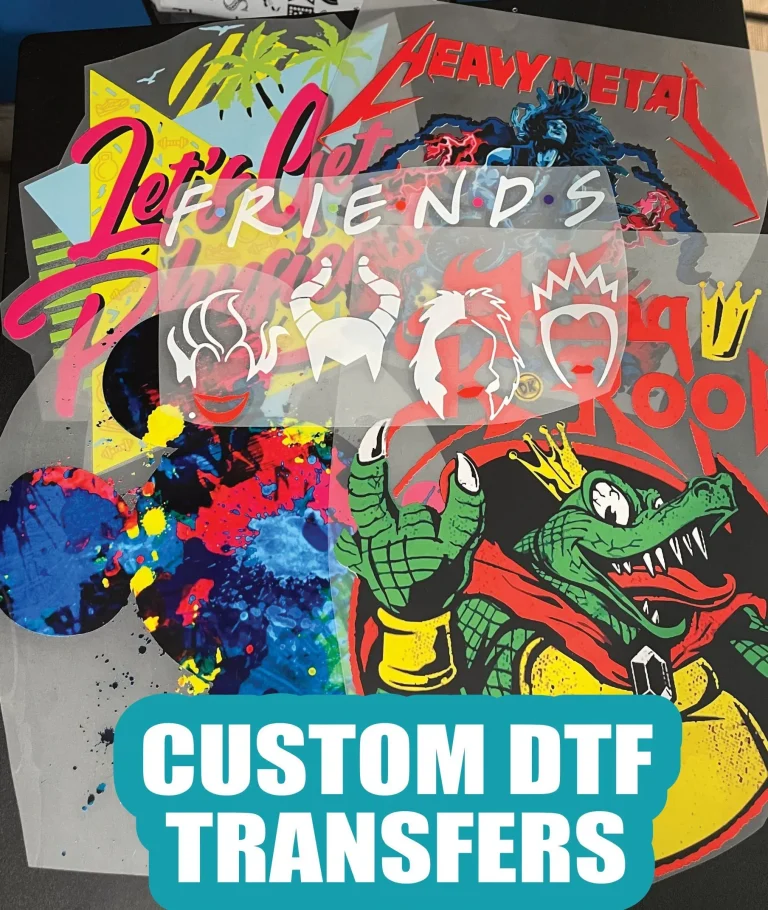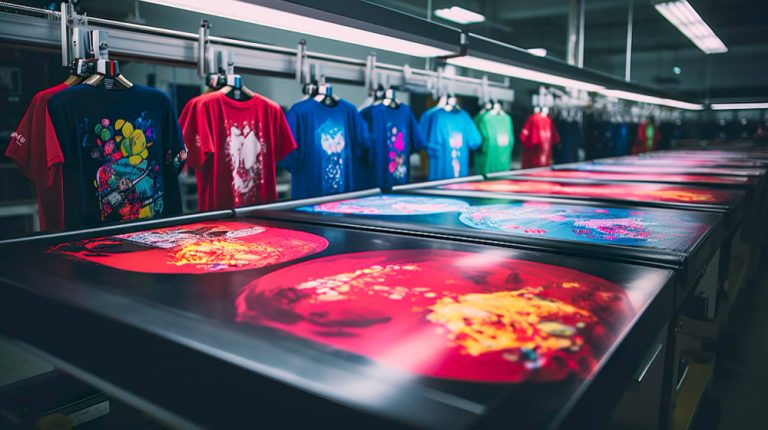UV DTF printing, or Ultraviolet Direct to Film printing, is revolutionizing the world of graphics and personalization. This cutting-edge technique unites the best aspects of Direct to Film (DTF) printing and advanced UV printing technology, creating stunning, durable prints on a multitude of surfaces. From fabrics to plastics and metals, the capabilities of UV DTF allow for a remarkable range of applications, making it a game-changer for both hobbyists and professionals. As more people seek printing solutions that deliver exceptional quality and longevity, understanding DTF printing advantages becomes essential. In this guide for beginners, we’ll explore everything you need to know to get started with UV DTF printing and unlock your creative potential.
Welcome to the dynamic domain of Ultraviolet Direct to Film printing, an innovative method that blends the principles of DTF and UV printing technologies. Often referred to as UV printing, this process involves curing inks with ultraviolet light, allowing for impressive prints on various substrates like textiles and rigid materials. As demand for customization spikes, many are discovering the benefits of Direct to Film printing, which is known for its vibrancy and durability. Suitable for both experienced printers and newcomers, mastering the fundamentals of UV DTF for beginners can elevate your projects to new creative heights. Join us as we delve deeper into this versatile printing technique and its numerous applications.
Understanding UV DTF Printing Technology
UV DTF printing, or Ultraviolet Direct to Film printing, is an innovative method that harnesses the power of ultraviolet light to cure specially formulated inks. Unlike traditional printing techniques, which often rely on solvents or water-based inks, UV DTF uses UV light to instantly dry the print. This rapid curing process not only enhances the quality of the prints but also opens up possibilities for printing on a diverse range of substrates, including fabrics, plastics, glass, and metals. By understanding the mechanics of UV DTF technology, users can appreciate its advantages in delivering high-quality results across various applications.
The process begins with printing on a film, which is then applied directly to the desired material. This allows for detailed designs and vibrant colors, making UV DTF a popular choice for personalized products and promotional materials. As beginners explore this technology, they’ll find that mastering the basics of UV printing technology can unlock many creative opportunities, enabling them to produce professional-level work from the outset.
Benefits of UV DTF Over Traditional Methods
One of the standout benefits of UV DTF printing is its remarkable durability. Traditionally printed items can fade or become scratched over time, especially when exposed to harsh environmental conditions. In contrast, UV DTF prints are cured with a UV light that creates a robust bond, making them more resistant to fading, scratches, and water damage. This durability is crucial for items intended for outdoor use or those that will be subjected to regular handling. By choosing UV DTF printing, businesses can ensure their products maintain their quality and appearance for much longer.
Moreover, another advantage of UV DTF printing is the elimination of the pre-treatment process. Many traditional printing methods require surfaces to be prepped before printing, which can add time and complexity to production. UV DTF simplifies this workflow greatly, allowing users to print directly onto various materials without the need for initial treatment. This feature makes it especially appealing for beginners who may find the multi-step processes of traditional methods daunting, enabling them to jump right into creating their unique designs.
Exploring Applications of UV DTF in Various Industries
UV DTF printing is capturing significant attention across multiple sectors due to its adaptability. In the apparel industry, for instance, this technology is revolutionizing how custom clothing is produced. Designers can easily create intricate patterns and vibrant prints on fabrics ranging from cotton to polyester, enabling a new wave of personalized fashion items. As companies look to differentiate themselves in a competitive market, the ability to produce unique and eye-catching designs quickly becomes a tremendous advantage.
In addition to apparel, UV DTF printing has found its way into industrial applications as well. Many businesses utilize this technology for labeling products or branding tools and machinery. High-quality, durable prints enhance brand visibility, demonstrating the reliability of UV DTF not just in creative sectors but also in industrial environments. This versatility makes it an attractive option for companies looking to broaden their service offerings and meet diverse client needs.
Recent Developments in UV DTF Equipment
The evolution of UV DTF printing technology is noteworthy, particularly with the advancements in equipment. Manufacturers are continuously innovating to produce printers that are not only more user-friendly but also more cost-effective. These enhancements have made UV DTF accessible to a broader audience, including small businesses and hobbyists who are just starting in the printing world. Many new printers come equipped with intuitive interfaces and comprehensive user manuals, providing a valuable learning resource for beginners.
Additionally, recent developments have led to faster print speeds and improved ink capabilities, allowing users to expand their production capabilities. With robust support systems and tutorials available, even those with minimal experience can quickly grasp the technology and begin their UV DTF printing journey with confidence.
Sustainability in UV DTF Printing Practices
Sustainability is a significant trend in the printing industry, and UV DTF is no exception. As the world becomes more conscious of its ecological footprint, many businesses are seeking eco-friendly printing methods. UV printing technology, particularly UV DTF, utilizes inks that are less harmful to the environment compared to traditional solvent-based inks. This aspect of UV DTF printing not only helps companies align with sustainability practices but also attracts environmentally-conscious customers who value responsible business practices.
Moreover, the efficiency of the UV curing process reduces waste associated with leftover inks and requires less energy compared to other printing methods. By investing in UV DTF technology, businesses can significantly enhance their sustainability profile, marking a commitment to environmentally friendly operations without compromising on quality.
Essential Resources for Beginners in UV DTF Printing
Starting in UV DTF printing can feel overwhelming, but there are numerous resources available to help beginners navigate this exciting field. Online tutorials and how-to videos are abundant on various platforms, offering step-by-step guidance on everything from equipment setup to print techniques. These resources are invaluable for novices looking to familiarize themselves with UV DTF processes and best practices, making learning accessible and engaging.
In addition, participating in webinars and workshops led by industry experts can greatly enhance a beginner’s understanding of UV DTF printing. These interactive sessions often cover advanced topics and troubleshooting techniques, allowing participants to glean insights from seasoned professionals. Engaging in these educational opportunities can build a strong foundation for new users, encouraging confidence and creativity in their printing endeavors.
Frequently Asked Questions
What is UV DTF printing and how does it work?
UV DTF printing, or Ultraviolet Direct to Film printing, is a modern printing technique that uses ultraviolet light to quickly cure inks printed onto specialized films. These films can be applied to a variety of surfaces, including fabric, plastic, glass, and metal, to create high-quality, durable prints.
What are the main advantages of using UV DTF printing?
The advantages of UV DTF printing include versatile substrate compatibility, high durability of prints, and the elimination of pre-treatment requirements before printing. This makes it ideal for producing vibrant and long-lasting items across various applications.
Is UV DTF printing suitable for beginners?
Yes, UV DTF printing is suitable for beginners due to its relatively simple workflow. With advancements in user-friendly equipment and resources like online tutorials, newcomers can easily learn to operate UV DTF printers and create quality prints.
What types of materials can be printed using UV DTF technology?
UV DTF technology is incredibly versatile and can print on a wide range of materials, including textiles, plastics, metals, and glass. This flexibility allows for creative possibilities in apparel, industrial labeling, and promotional items.
How does UV DTF printing compare to traditional printing methods?
UV DTF printing offers significant advantages over traditional methods, such as enhanced durability, resistance to scratches and fading, and no need for surface pre-treatment. This makes it a preferred choice for high-quality and lasting prints.
Are there any sustainability benefits associated with UV DTF printing?
Yes, UV DTF printing utilizes UV inks, which are generally more eco-friendly compared to solvent-based inks. This aligns with the growing trend of sustainable practices in the printing industry, appealing to environmentally-conscious consumers.
| Key Point | Details |
|---|---|
| What is UV DTF Printing? | Utilizes UV light to cure inks on films for printing on various surfaces. |
| Advantages of UV DTF Printing | |
| Versatile Substrate Compatibility | Prints on a wide range of materials including fabrics, plastics, glass, and metals. |
| Durability of Prints | UV DTF prints are resistant to scratches, water damage, and fading. |
| No Pre-Treatment Requirement | Simplifies the workflow by eliminating surface pre-treatment. |
| Areas of Application | |
| Apparel | Customized clothing and promotional items like t-shirts and hats. |
| Industrial Use | Use in labeling and branding for tools and machinery. |
| Promotional Items | Creation of unique giveaways to enhance brand visibility. |
| Recent Developments | |
| Advancements in Equipment | More user-friendly and cost-effective printers accessible to beginners. |
| Sustainability Trends | UV inks are more eco-friendly compared to solvent-based alternatives. |
Summary
UV DTF printing is revolutionizing the printing landscape with its innovative approach to producing high-quality prints. This versatile technique not only allows for various applications across different materials but also ensures prints that are durable and resistant to wear. With no pre-treatment required, UV DTF printing simplifies the overall process, making it accessible for beginners and established businesses alike. As advancements in technology continue to emerge, embracing UV DTF printing can significantly enhance your creative capabilities and elevate your business potential. Whether for personalized apparel, industrial applications, or promotional items, exploring the world of UV DTF printing opens up a realm of possibilities that caters to diverse printing needs.







